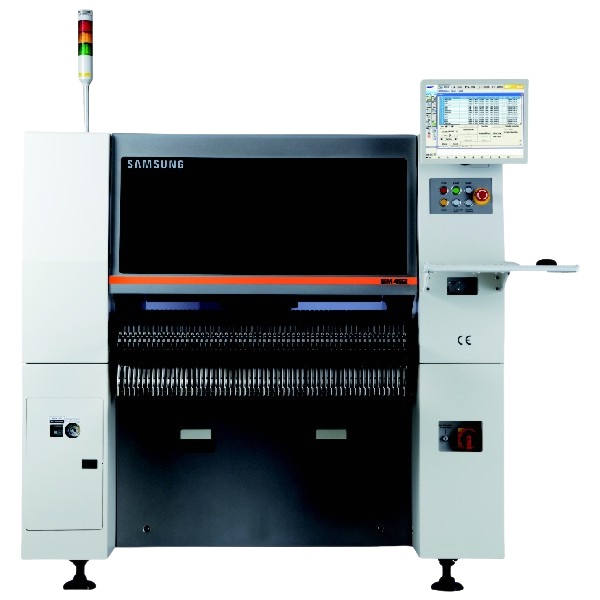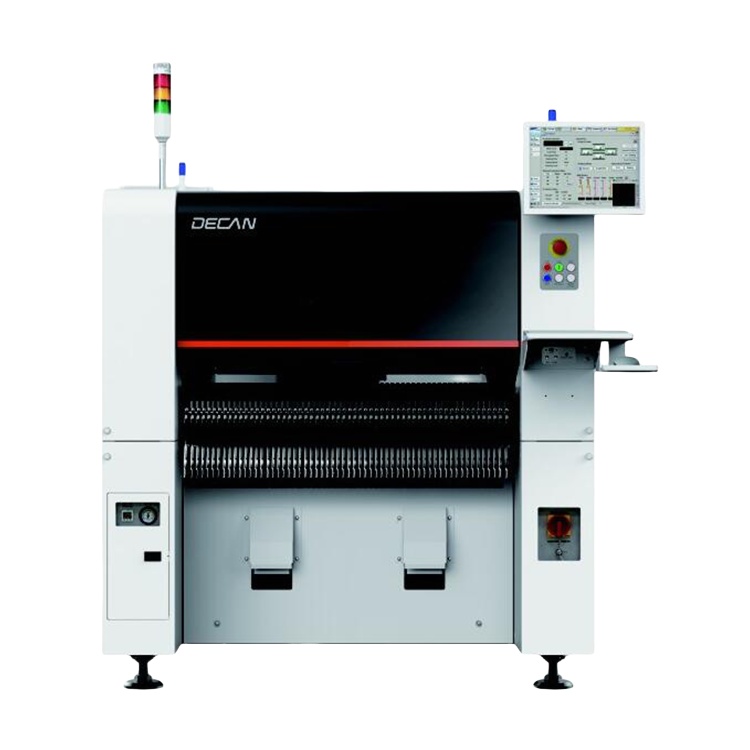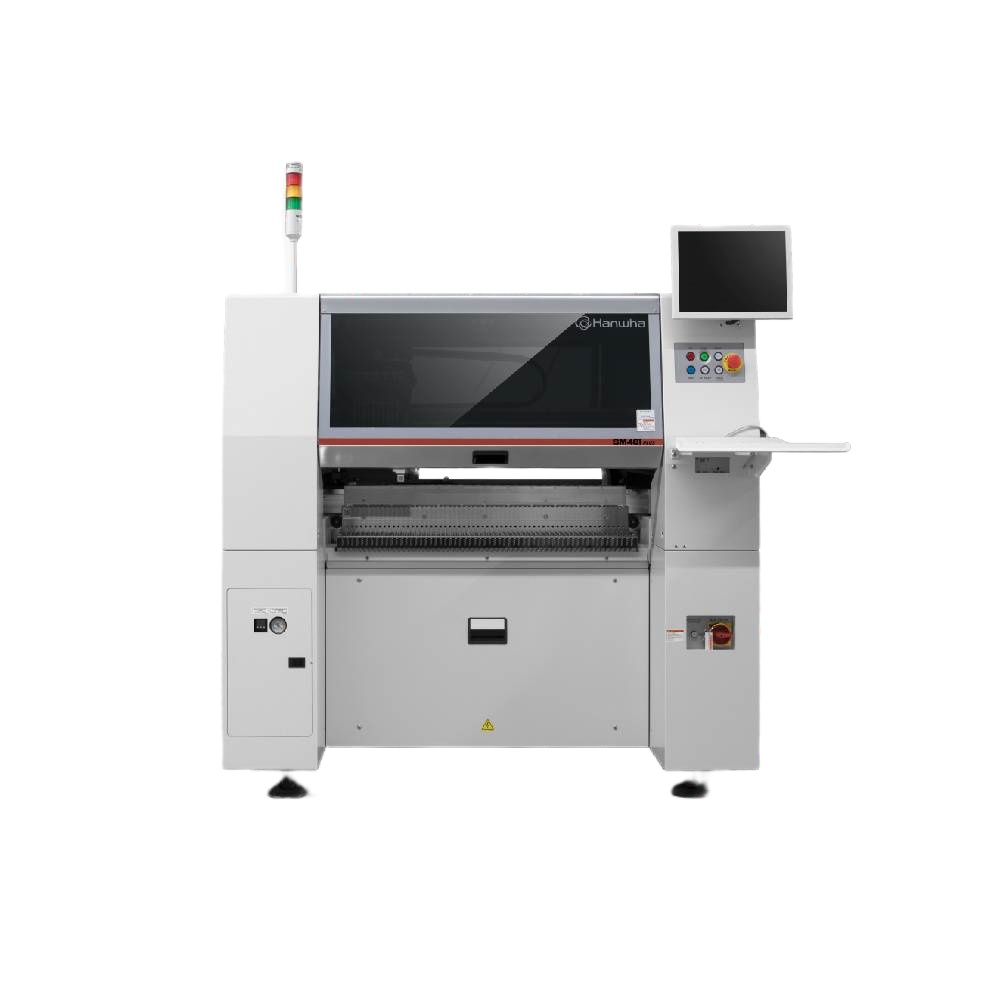Content Menu
● Introduction to Hanwha Pick and Place Technology
>> Key Features of Hanwha Pick and Place Systems
● Overview of Popular Models
>> HM520 Series
>> SM Series
>> Decan S2
● Benefits of Using Hanwha Pick and Place Systems
● Applications Across Industries
● Future Trends in Pick and Place Technology
● Conclusion
>> Frequently Asked Questions
Introduction to Hanwha Pick and Place Technology
Hanwha Precision Machinery, formerly part of Samsung, has been at the forefront of developing advanced pick and place systems. These systems are essential for placing electronic components onto printed circuit boards (PCBs) with high precision and speed. The company's commitment to innovation is evident in their extensive range of products designed to meet the diverse needs of various industries, including automotive, aerospace, medical, and consumer electronics.
Key Features of Hanwha Pick and Place Systems
1. High Speed and Accuracy: Hanwha's pick and place machines are renowned for their impressive placement speeds. For instance, the Hanwha Decan S2 can achieve an optimum placement rate of up to 92,000 components per hour (CPH) while maintaining high accuracy levels[3][6].
2. Modular Design: Many Hanwha models feature a modular design that allows for easy upgrades and customization. This flexibility is crucial for manufacturers who need to adapt quickly to changing production demands.
3. Versatile Component Handling: Hanwha systems can handle a wide range of component sizes—from tiny 01005 chips to larger components measuring up to 150 x 200 mm[2][5]. This versatility makes them suitable for various applications.
4. Smart Factory Integration: Hanwha's systems are designed to integrate seamlessly into smart factory environments. With advanced software solutions, manufacturers can achieve unmanned, non-stop production with zero defects[1][6].
5. User-Friendly Interface: The intuitive interface of Hanwha machines simplifies operation and reduces training time for operators.

Overview of Popular Models
HM520 Series
The HM520 series represents Hanwha's cutting-edge modular mounter technology. It is designed for high-speed production lines requiring flexibility in component handling.
- Speed: Up to 78,000 CPH
- Accuracy: ±25μm
- Component Range: Capable of placing components from 03015 up to 12mm in height
Hanwha HM520
SM Series
The SM series, particularly the SM482 Plus model, is known for its flexibility in medium-speed applications.
- Speed: Up to 30,000 CPH
- Structure: 1 Gantry x 6 Spindles
- Component Range: Handles odd-shaped parts effectively
Hanwha SM482 Plus
Decan S2
The Decan S2 is tailored for high-speed SMT applications with a focus on accuracy.
- Speed: 92,000 CPH
- Features: Automatic parts pick-up position alignment and reduced manual workload through automation
Hanwha Decan S2
Benefits of Using Hanwha Pick and Place Systems
1. Increased Productivity: The high-speed capabilities of Hanwha machines significantly reduce production time, allowing manufacturers to meet tight deadlines without compromising quality.
2. Cost Efficiency: By minimizing manual labor through automation and improving accuracy, these systems help lower operational costs over time.
3. Quality Assurance: With advanced vision systems and precise placement capabilities, Hanwha machines ensure high-quality outputs that meet industry standards.
4. Scalability: Manufacturers can easily scale their operations by adding more modules or upgrading existing equipment as demand increases.
5. Enhanced Flexibility: The ability to handle various component types makes Hanwha systems ideal for both low-volume custom jobs and high-volume production runs.

Applications Across Industries
Hanwha pick and place systems are utilized across multiple sectors:
- Electronics Manufacturing: For assembling consumer electronics such as smartphones and tablets.
- Automotive Industry: In the production of electronic control units (ECUs) that require precision.
- Medical Devices: For placing components in life-saving medical equipment where accuracy is critical.
- Aerospace Applications: Ensuring reliability in complex electronic assemblies used in aircraft.
Future Trends in Pick and Place Technology
As technology continues to evolve, several trends are shaping the future of pick and place systems:
1. AI Integration: The incorporation of artificial intelligence will enhance machine learning capabilities for better predictive maintenance and optimization.
2. Robotics Automation: Increased use of robotics will further streamline processes within manufacturing lines.
3. Sustainability Initiatives: Manufacturers are focusing on eco-friendly practices by reducing waste through efficient production methods.
4. Customization Options: Greater demand for tailored solutions will lead companies like Hanwha to offer more customizable features in their equipment.
Conclusion
Hanwha's pick and place systems represent a significant advancement in manufacturing technology, providing unparalleled speed, accuracy, and flexibility. As industries continue to demand higher efficiency and lower costs, these systems will play a crucial role in shaping the future of production processes.

Frequently Asked Questions
1. What is a pick and place machine?
A pick and place machine automates the process of placing electronic components onto PCBs with precision.
2. How fast can Hanwha pick and place machines operate?
Depending on the model, they can achieve speeds ranging from 30,000 CPH to over 92,000 CPH.
3. What types of components can these machines handle?
They can accommodate a wide variety of components from small chips (01005) to larger devices (up to 12mm tall).
4. Are Hanwha machines suitable for small batch production?
Yes, their flexibility allows them to efficiently handle both low-volume custom jobs and high-volume productions.
5. How do Hanwha machines integrate into smart factories?
They utilize advanced software solutions that enable unmanned operations with real-time monitoring capabilities.




















